COVID-19: How A Citizen Group Is Keeping The Virus At Bay In 35 UP, Haryana Villages
Mission Manjri is a citizen-led group working round the clock to combat coronavirus in rural areas of Haryana and Uttar Pradesh.
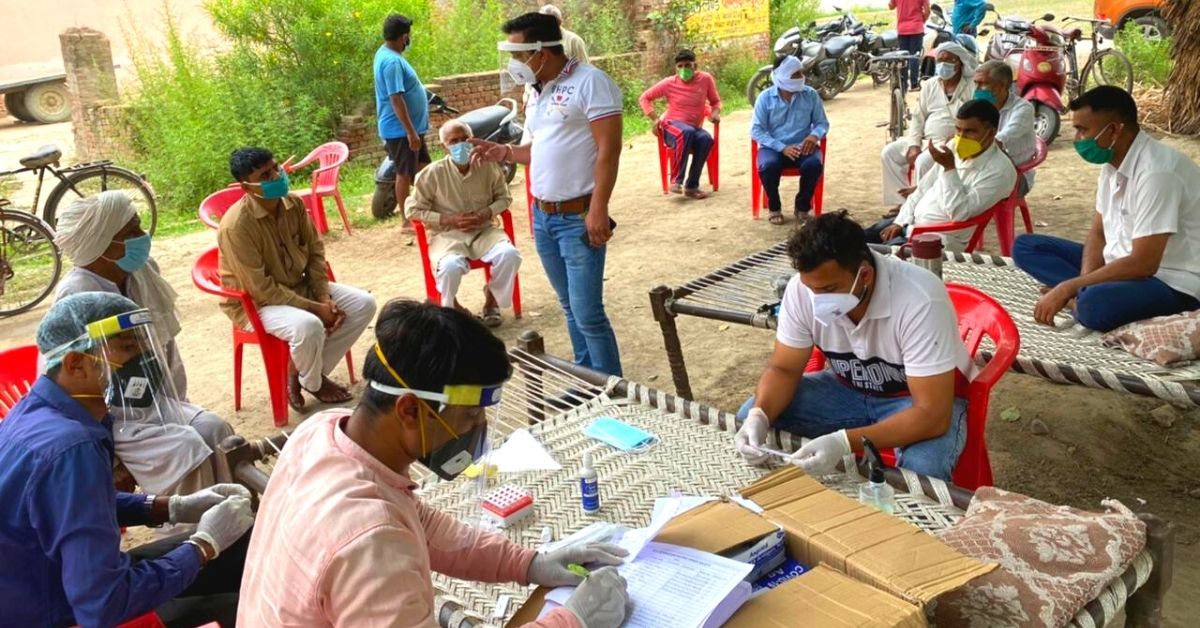
It has been nearly 20 days and several hours since Dr Parveen Kundu joined Mission Manjri, a citizen-led group that offers free consultations and essential resources such as oximeters, masks, and medicines in rural areas of Uttar Pradesh and Haryana.
Dr Parveen is the managing director at RNM Imaging Therapy and Research Centre in Haryana’s Rohtak district, and has been dedicating all her time to help contain COVID-19 cases in rural areas.
Working in a Covid hotspot and seeing an average of hundred patients every day is mentally and physically exhausting, to say the least. Knowing the severity of the deadly virus, she has been going door-to-door to spread awareness and distribute resources such as masks and medicines.
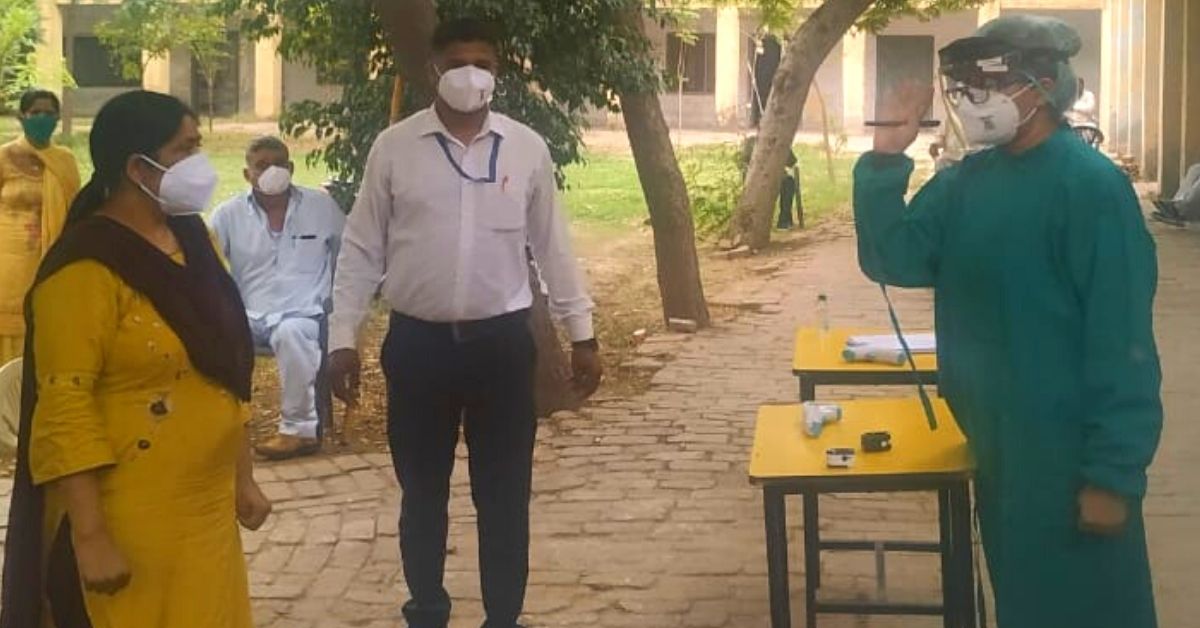
The situation is grim, but one thing keeps her going.
“My work typically involves identifying mild cases and preventing them from turning into severe as the initial treatment protocol is crucial. For this, I have also trained volunteers who help patients with necessary precautions and medicines. There is an unparalleled joy in seeing our efforts translate into reality. Every time I discharge a patient or help a family procure an oximeter or bed, the situation seems hopeful. An infected elderly couple were not told about glucose monitoring and we helped address that. The couple is recovering now. Something as small as this can make a huge difference,” Dr Parveen tells The Better India.
Like Dr Parveen, there are several volunteers in Mission Manjri who are working round the clock to combat coronavirus in rural areas of Haryana and Uttar Pradesh. In the last 3-4 weeks, Mission Manjiri has reached out to more than 35 villages and spent nearly Rs 20,00,000 in their fight against the pandemic.
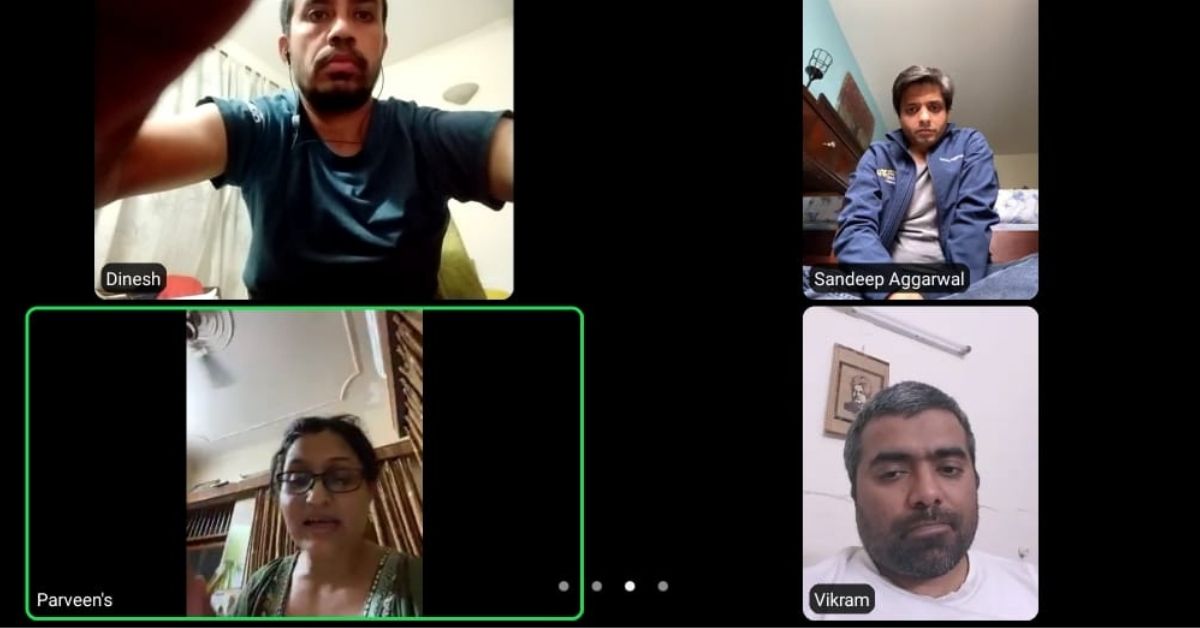
The team shares with us why the spread of the virus in rural areas is more concerning, and how they are tackling it with various innovative approaches.
Accessing remote corners of rural areas
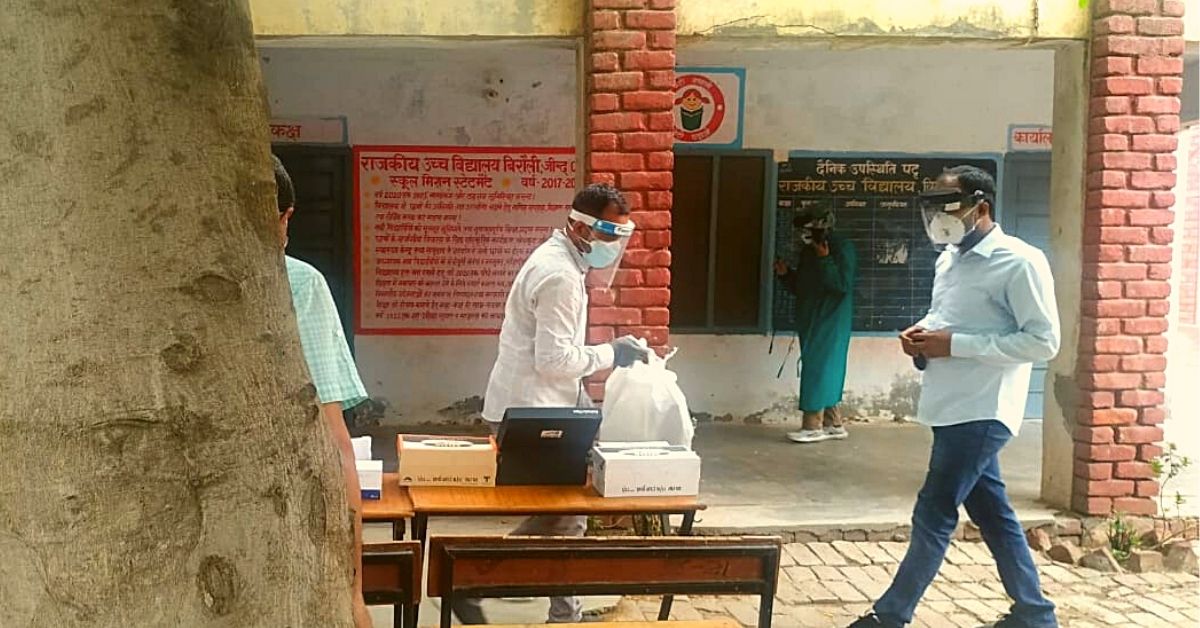
Issues in hinterlands are very different from an urban setting, says Dr Vikram Saini from All India Institute of Medical Sciences (AIIMS), Delhi.
“In urban areas, demand is centered around beds, oxygen and other care facilities. In rural areas, even basic medical facilities are hard to get, let alone care facilities. Unlike the urban population that already knew the severity of the virus thanks to the first wave, village residents are unaware. Basic protocols such as social distancing and wearing a mask might be an alien concept for them. They are unable to distinguish between the common flu and COVID-19 so they prefer local treatments instead of getting tested,” he says.
Dr Sandeep Aggarwal, Associate Professor of Clinical Medicine, Perelman School of Medicine, Philadelphia, emphasises on social behaviour patterns.
“Rural folks, by nature, interact in closed-knit communities. Due to their way of living, one patient can infect up to 5-7 people, unlike in urban areas, where 2-3 people are infected. Additionally, the test sample needs to be stored in cold temperatures, but due to the absence of cold-chain infrastructure or irregular electric supplies in these areas, their quality can deteriorate, thus defeating the purpose of a test altogether.”
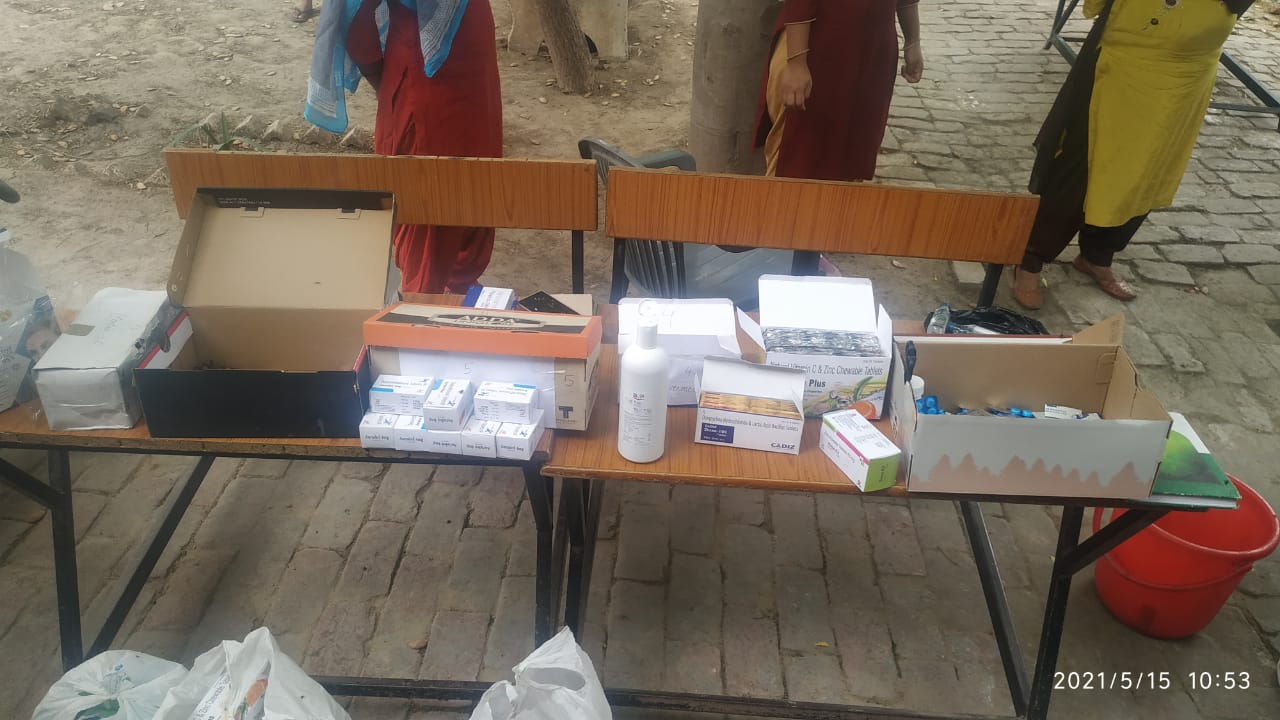
Meanwhile, Dinesh Punia, an on-ground volunteer who aims to cover 6-7 villages in Rohtak, says trust-building is a daunting task that requires time, something that they don’t have.
“Other challenges include caste division and social dynamics, so we have to be careful in our distribution. We cannot assume that resources will reach everyone if a representative from the village is given the task. Since the immunity of rural folks is better, a patient with 84 oxygen level can be seen walking around, thereby leading to the belief that treatment isn’t needed. Most importantly, not all villagers have an option to use social media for help, ” he adds.
Containing fear and panic
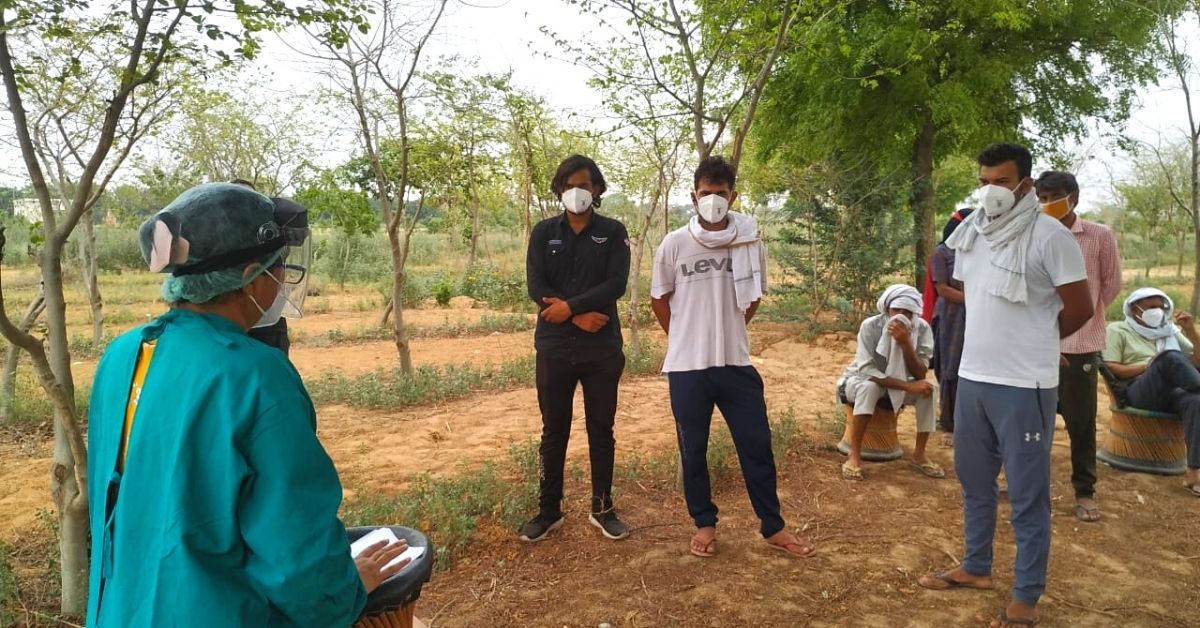
Sachin, a volunteer who spearheads the efforts in Meerut district of Uttar Pradesh, plans to cover a total of hundred villages across three blocks. His team comprises medical experts, locals and volunteers like him who look after everything, from testing, consultations to providing resources. So far their team has covered over 30 villages, targeting 3-4 villages every day.
In his first week, he was faced with two issues — widespread quackery and an acute need of support from the local administration.
“The primary contact for villagers for any health-related issues are ‘jolachap doctors’ or quacks who are not qualified enough to prescribe medicines for coronavirus. Instead of disregarding them completely, we used their rapport with the villagers to our advantage. Through a series of discussions and training, we also educated the quacks about the right protocol to follow for COVID-19. It is proving to be effective as at least the people are not falling for random remedies,” says Sachin.
As for the local administration, the volunteering group faced permission issues to test people, set up COVID-19 facilities, procure oxygen cylinders, and more. They collaborated with authorised private labs to conduct testing.
Telemedicine is also helping prevent panic and fear among the villagers. Mission Manjri has an army of doctors who extend support to the already exhausted and over-stretched on-ground doctors in Haryana and Uttar Pradesh.

Dr Mukesh Dhillon, senior resident of cardiology, AIIMS is at the forefront of this service. He says the digital health space and online consultations are convenient and accessible, which calls for better participation. The doctors chalk out a plan daily as per on-ground medical updates.
“We may not be on-ground with people, but can certainly give our clinical input based on available resources such as oximeters and medicines. We simplify medical terms in their vernacular lingo during the consultation to give them more clarity. We study and monitor each patient before outlining their treatment process. We modify our plans as and when necessary,” he says.
A typical day begins with a group discussion between all stakeholders, including volunteers and doctors. After providing updates about cases, severity, and the progress made, a door-to-door campaign usually takes place. ASHA and Anganwadi workers also play a crucial role in mobilisation. Doctors like Dr Parveen start meeting patients at a COVID-19 care facility and doctors like Dr Sandeep and Dr Dhillon take out time from their hectic schedules for video consultations.
In between all this, a few volunteers like Punia keep track of resources and arrange for the same every day. After a hard day, the group assembles for feedback sessions. If there is any scientific advance or a public health policy development, they discuss these and develop strategies to communicate it to the person on the ground,” adds Dr Saini.
While the volunteers of Mission Manjri will be active participants till there is a drop in cases, they are training the locals to take over once Mission Manjri leaves.
Click here to support Mission Manjri
Edited by Divya Sethu
If you found our stories insightful, informative, or even just enjoyable, we invite you to consider making a voluntary payment to support the work we do at The Better India. Your contribution helps us continue producing quality content that educates, inspires, and drives positive change.
Choose one of the payment options below for your contribution-
By paying for the stories you value, you directly contribute to sustaining our efforts focused on making a difference in the world. Together, let’s ensure that impactful stories continue to be told and shared, enriching lives and communities alike.
Thank you for your support. Here are some frequently asked questions you might find helpful to know why you are contributing?


This story made me
-
97
-
121
-
89
-
167













